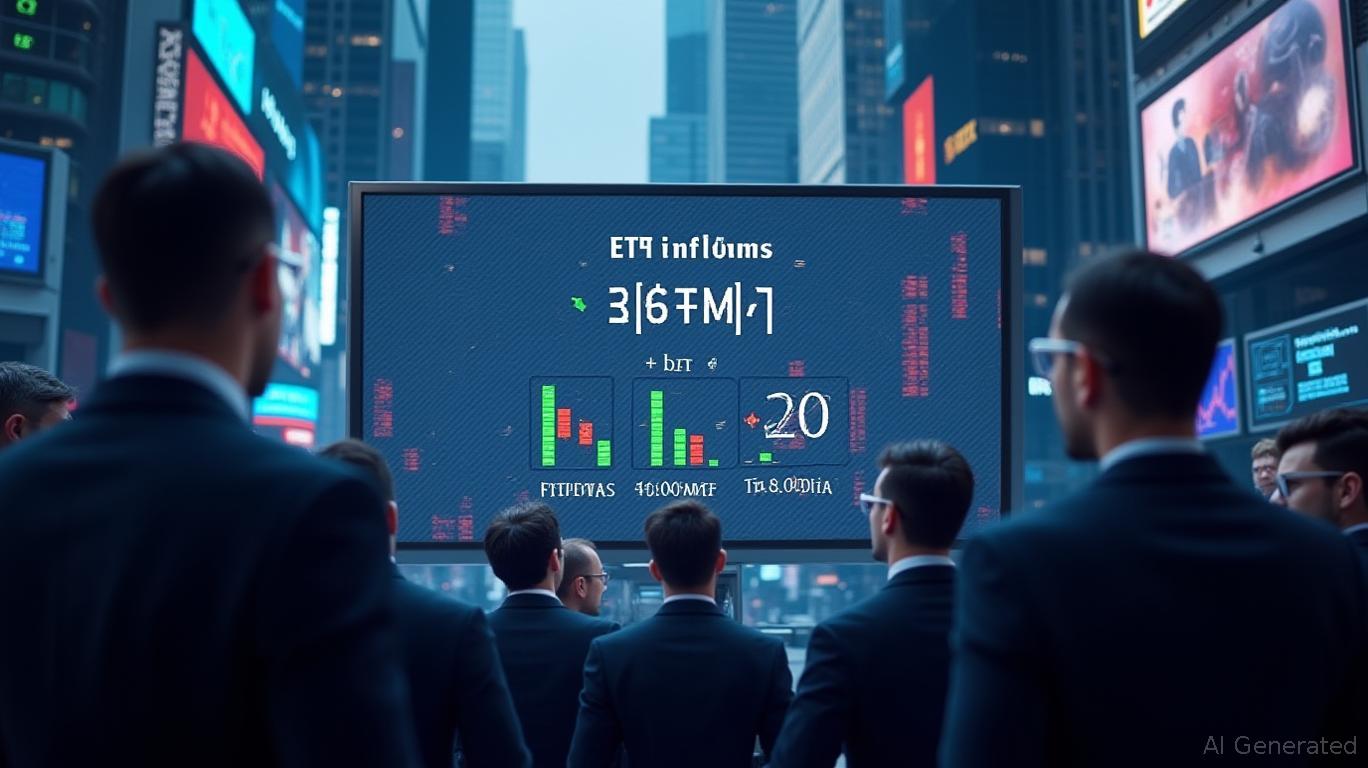Stablecoins Lead Tokenized Deposits in Security and Integration Capabilities
- Experts argue stablecoins outperform tokenized deposits in safety, liquidity, and cross-chain interoperability, per Columbia Business School and Markets.com analyses. - Tokenized real-world assets (RWA) market could hit $2 trillion by 2028, driven by stablecoin liquidity and DeFi integration, Standard Chartered forecasts. - Banks resist yield-bearing stablecoins fearing market share loss, while U.S. regulatory clarity remains critical for sector growth, reports note. - Institutional adoption accelerates
The competition between stablecoins and tokenized bank deposits is heating up, with many analysts asserting that stablecoins have a clear advantage in terms of security, usability, and widespread use. Omid Malekan, who teaches at Columbia Business School, argues that stablecoins backed one-to-one by cash or short-term assets are fundamentally more secure than tokenized deposits issued by banks using fractional reserves. “Stablecoins are naturally better equipped to handle liquidity challenges,” Malekan explained, highlighting that tokenized deposits are often limited by KYC requirements and lack broad compatibility, as noted in a

Stablecoins also excel in composability, allowing them to be easily integrated throughout the crypto landscape and within decentralized applications (dApps). In contrast to tokenized deposits, which are typically restricted to closed systems, stablecoins support international payments, yield-generating protocols, and interactions with DeFi platforms, according to a
At the same time, the market for tokenized real-world assets (RWA) is expected to reach $2 trillion by 2028, based on a
Stablecoins are at the heart of this evolution. With a total market value surpassing $300 billion, they serve as the main source of liquidity for tokenized assets, streamlining on-chain transactions and yield opportunities, according to Standard Chartered. Tether’s
Yet, there are still hurdles to overcome. Banks and other financial players are pushing back against stablecoins that pay interest, concerned about losing their share of the market. The banking sector has actively opposed yield-generating stablecoins, which could threaten traditional interest-based business models, as highlighted in the Markets.com article. Regulatory ambiguity is another significant barrier. Standard Chartered cautions that without comprehensive U.S. crypto regulations before the 2026 midterms, progress could be delayed, the report adds.
Even so, institutional interest is growing rapidly. Coinbase’s recent $2 billion offer for stablecoin infrastructure provider BVNK highlights the strategic importance of the sector, while BlackRock and other major players are exploring funds backed by stablecoins, according to a
As the financial industry adapts to these changes, the decision between stablecoins and tokenized deposits will depend on practical use and regulatory developments. At present, stablecoins seem to be leading, thanks to their flexibility, liquidity, and growing institutional support.
Disclaimer: The content of this article solely reflects the author's opinion and does not represent the platform in any capacity. This article is not intended to serve as a reference for making investment decisions.
You may also like
Investor Wins $10,000 on Coin Terminal Launchpad After Refund
Ethereum News Update: MoonBull's Tactical Ascent: Will This Ethereum-Powered Meme Coin Surpass Its Hype-Fueled Competitors?
- MoonBull ($MOBU) leads meme coin presales with $550K raised and 9,256% projected ROI, outpacing rivals like BullZilla and La Culex. - Structured 23-stage presale (Stage 5 at $0.00006584) and 95% APY staking attract 1,700+ participants, leveraging Ethereum's infrastructure and community governance. - Competitors show lower ROI (BullZilla: 3,477%) and limited liquidity, while Ethereum/BNB provide foundational support but lack meme coin's explosive growth potential. - Analysts caution meme coin risks (volat

Chinese DeFi Platform SunPerp Flourishes Despite Crypto Ban, Reaches $3.6B in Trading Volume
- SunPerp, a Chinese DeFi platform, achieved $3.6B trading volume despite China's crypto ban, leveraging TRON and cross-chain expansion. - The non-custodial platform attracted 10,000 users in its test phase with zero fees and hybrid on-chain/off-chain settlement systems. - Its growth highlights DeFi's resilience in regulated markets, offering alternatives to centralized exchanges through multi-oracle security and self-custody. - Analysts warn regulatory risks persist, but SunPerp's low-cost TRON infrastruc

Solana News Update: Institutions Favor Solana's Fast Transactions, Driving $417 Million ETF Inflows and Surpassing BTC and ETH
- Solana's blockchain hit $29B weekly DEX volume and 70M daily transactions in October, surpassing Ethereum . - Bitwise Solana ETF attracted $417M inflows, outpacing Bitcoin/ETH ETFs amid growing institutional adoption. - Network's 1,100 TPS throughput and 7% staking yields contrast with Ethereum's 3% yields and fragmented Layer 2 solutions. - Whale activity and $2T stablecoin transfers highlight ecosystem strength, while XRP's 25,000 daily accounts lag behind.
